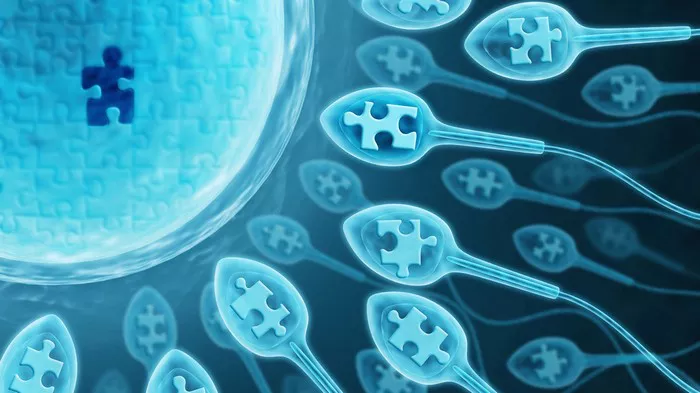Recent research has uncovered a crucial link between the heterogeneous nuclear ribonucleoprotein K (hnRNPK) and male fertility, highlighting its pivotal role in spermatogenesis through the regulation of piRNA production. A groundbreaking study by Xu et al., published recently, explores how the loss of hnRNPK affects spermatogenesis, offering new insights into the molecular mechanisms underpinning male infertility.
The study showed that deleting hnRNPK in mouse spermatogonia resulted in male sterility and significant disruption in the processes of spermatogenesis, particularly during the pachytene stage of meiosis. This is a critical phase where piwi-interacting RNAs (piRNAs) play a vital role in ensuring proper spermatogenesis.
Proteomic analysis performed on testicular tissue at postnatal day 28 (P28) revealed a striking alteration in the testicular proteome, with 791 proteins exhibiting significant changes in expression—535 downregulated and 256 upregulated. The downregulated proteins were primarily involved in fertilization, spermatogenesis, and notably, piRNA metabolism.
Among the affected proteins were key factors required for piRNA synthesis, including PIWIL1, TDRD7, DDX4, and MAEL. When hnRNPK was deleted, these proteins displayed reduced expression, directly impairing piRNA production. The researchers employed advanced techniques such as RNA immunoprecipitation and fluorescence assays to demonstrate how hnRNPK binds to the 3′ untranslated regions (3’UTRs) of piRNA-related transcripts, enhancing their translational efficiency.
“HnRNPK plays a pivotal role by modulating the expression of piRNA pathway proteins, affecting their localization and function, and thus, spermatogenesis,” the authors explained. The study provided a comprehensive analysis of how the absence of hnRNPK disrupts the piRNA pathway, leading to reduced piRNA levels and male infertility.
PiRNAs are essential for maintaining genome integrity and regulating germ cell development during spermatogenesis. At the pachytene stage, piRNAs bind to PIWI proteins, guiding the silencing of transposons and regulating germline development. Previous research had already established piRNAs as crucial for germ cell maturation, and the current findings align with this knowledge, highlighting hnRNPK’s role in enhancing the regulatory processes of the piRNA pathway.
The study also demonstrated how the absence of hnRNPK led to the downregulation of several piRNA-related proteins, causing decreased piRNA levels and abnormal structures within the seminiferous tubules during sperm development. These findings suggest that hnRNPK plays an essential role in coordinating multiple regulatory pathways in spermatogenesis.
Given the complexity of spermatogenesis, which involves multifaceted regulatory mechanisms, these findings raise important questions about how hnRNPK interacts with other molecular pathways. Future research will likely explore additional regulatory interactions involving hnRNPK, with implications for both male reproductive health and broader biological processes.
In conclusion, this study emphasizes hnRNPK’s vital role in piRNA regulation, positioning it as a critical protein in spermatogenesis. The loss of hnRNPK leads to significant fertility issues, offering potential avenues for developing therapeutic strategies for male infertility.
Related topics:
Female Urologist Brings Specialized Care to Nassau County for Pelvic Health Disorders
Malaysia’s Fertility Rate Declines, But Shows Signs of Improvement in 2023






















